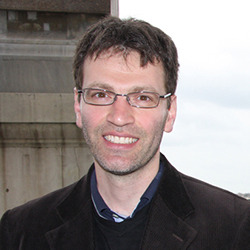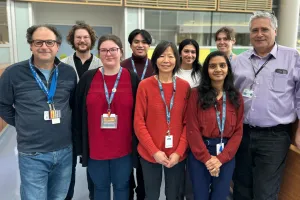Worm study reveals the secrets of early spinal cord development

Dr. Antonio Colavita and his team discovered that two molecular pathways work together in the early development of the spinal cord. While the discovery was made in a transparent worm called C. elegans, the processes are likely the same in humans. The two pathways work together to help the embryo’s nerve cord narrow and stretch out, a process called convergent extension. In humans, problems with this process can cause birth defects in the brain or spinal cord called neural tube defects. Researchers already knew that the Planar Cell Polarity or PCP pathway was important for convergent extension, but Dr. Colavita and his team found that a pathway that includes a protein called SAX-3/Robo also plays a role. When they turned off both pathways in nematodes, they found the nerve cord stayed short and stubby instead of reaching all the way down the body. These findings published in Developmental Cell mean researchers can use nematodes to learn more about how the human nervous system develops and how the process can be disrupted.
Co-authors: Pavak K. Shah, Matthew R. Tanner, Ismar Kovacevic, Aysha Rankin, Teagan E.,Marshall, Nathaniel Noblett, Nhan Nguyen Tran, Tony Roenspies, Jeffrey Hung, Zheqian Chen, Cristina Slatculescu, Theodore J. Perkins, Zhirong Bao, Antonio Colavita
Funders: Canadian Institutes of Health Research, Natural Sciences and Engineering Research Council of Canada, National Institutes of Health, Memorial Sloan Kettering Cancer Center, The Ottawa Hospital Foundation
The Ottawa Hospital: Inspired by research. Driven by compassion
The Ottawa Hospital is one of Canada’s largest learning and research hospitals with over 1,100 beds, approximately 12,000 staff and an annual budget of over $1.2 billion. Our focus on research and learning helps us develop new and innovative ways to treat patients and improve care. As a multi-campus hospital, affiliated with the University of Ottawa, we deliver specialized care to the Eastern Ontario region, but our techniques and research discoveries are adopted around the world. We engage the community at all levels to support our vision for better patient care. See www.ohri.ca for more information about research at The Ottawa Hospital.
University of Ottawa: —A crossroads of cultures and ideas
The University of Ottawa is home to over 50,000 students, faculty and staff, who live, work and study in both French and English. Our campus is a crossroads of cultures and ideas, where bold minds come together to inspire game-changing ideas. We are one of Canada’s top 10 research universities—our professors and researchers explore new approaches to today’s challenges. One of a handful of Canadian universities ranked among the top 200 in the world, we attract exceptional thinkers and welcome diverse perspectives from across the globe. www.uottawa.ca
Media Contact
Amelia Buchanan
Senior Communication Specialist
Ottawa Hospital Research Institute
Office: 613-798-5555 x 73687
Cell: 613-297-8315
Learn more about:
The Ottawa Hospital is a leading academic health, research and learning hospital proudly affiliated with the University of Ottawa and supported by The Ottawa Hospital Foundation.


